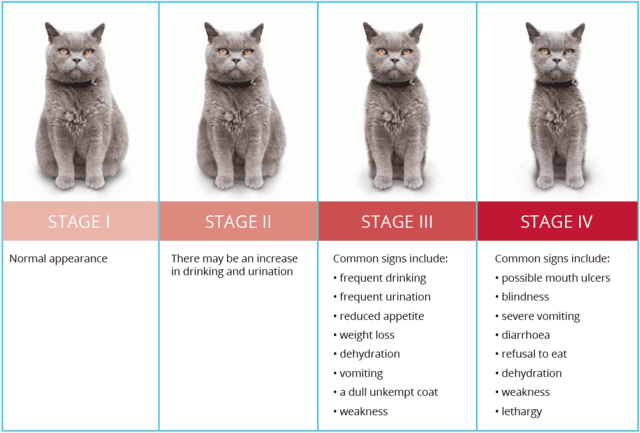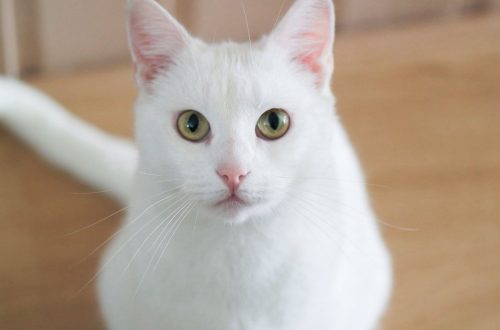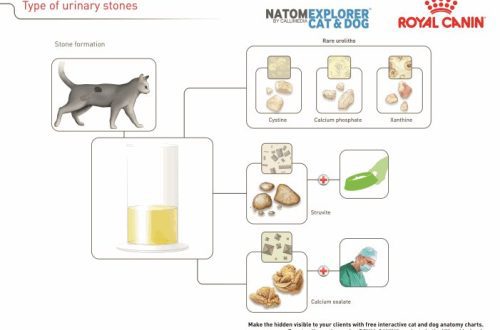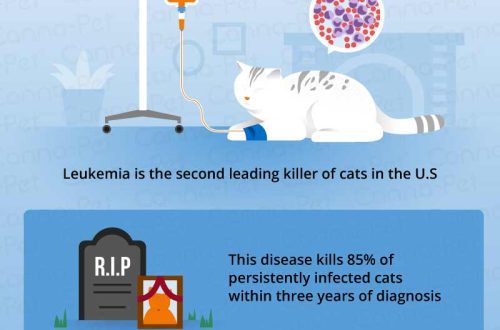
Chronic renal failure in cats
Every 5th cat suffers from kidney disease. The task of the owner is to prevent kidney failure, to notice the emerging health problem in the early stages – and we will tell you how to recognize the disease and help the cat.
What is chronic renal failure
Chronic kidney disease (CKD (old name – chronic renal failure, CRF) is a slowly progressing disease, accompanied by structural and / or functional disorders in the kidneys.
It is found most often in cats at the age of 5-15 years, there is no breed or gender predisposition.
Causes
Predisposing factors for the development of CKD are:
- Previous acute kidney injury (poisoning, acute urinary retention, etc.)
- Congenital pathologies of the kidneys
- Mechanical damage to the kidneys
- Other diseases of the urinary system (cystitis, urolithiasis, infections)
- Genetic pathologies, for example, polycystic kidney disease of Persian, exotic, Abyssinian cats and their mestizos
- Oncological diseases
- Chronic infectious diseases, such as viral leukemia and immunodeficiency
- Chronic poisoning. For example, regularly eating toxic houseplants
- Long-term use of nephrotoxic drugs
- Obesity
- Diabetes
- Unbalanced diet, feeding on poor quality feed or unsuitable natural food, feeding food from your own table
- Low water consumption
- Age over 7
Symptoms and complications
Symptoms in chronic renal failure, especially at an early stage are not specific, can be smoothed out. Other diseases can also occur with a similar clinical picture. Chronic renal failure is not a one-day process; vivid signs of malaise can appear when more than 75% of the kidney tissue is already damaged. That is why the owner needs to carefully monitor the health of his cat and consult a doctor in a timely manner.
Signs of kidney failure in cats include:
- Poor appetite, which can be mistaken for gastrointestinal diseases or pickiness
- Increased water consumption
- Frequent and sometimes ineffective urination
- Urine may be almost colorless, clear, cloudy, or bloody.
- Vomiting, ineffectual, saliva or food, several times a day
- Wool deterioration, frizziness, greasy or dryness
- Edema
- Depressed state, weak reaction to stimuli
- Weight loss, exhaustion
- Unpleasant odor from the mouth, often ammonia
- Ulcers in the oral cavity, stomatitis, dry mucous membranes
- Constipation
By the nature of the course, renal failure is acute (ARF) and chronic (CRF).
- The acute form develops rapidly, all signs appear in a short period of time.
- The chronic form develops longer and its danger lies in the fact that at an early stage, when the pet can still be helped, there are practically no symptoms of the disease. They appear only when more than 2/3 of the kidneys are damaged.
Diagnostics
It is not possible to make a diagnosis on the basis of one examination or several symptoms. Therefore, you need to be prepared to conduct a number of studies:
- Biochemical and general clinical blood test. Especially important are the values of urea, creatinine, phosphorus, red blood cells, hemoglobin and hematocrit
- Panoramic ultrasound of the abdominal cavity. It makes sense to visualize only the bladder and kidneys only in dynamics. During the initial examination, it is necessary to identify structural changes in all organs, since the cat may have combined pathologies
- A general urine test allows you to assess how well the filtering ability of the kidneys is functioning, whether there are signs of inflammation, urolithiasis
- Protein/creatinine ratio helps to detect kidney failure at an early stage
- Pressure measurement. Chronic renal failure goes hand in hand with arterial hypertension. If the pressure is elevated, then it is required to reduce it with medication on an ongoing basis. For the study, a veterinary tonometer for animals is used.
The diagnosis of CKD cannot be made on the increase of only one indicator, the whole picture is evaluated as a whole. The disease has 4 stages. They are divided conditionally, based on the level of creatinine in the blood:
Stage 1 – creatinine less than 140 µmol/l
Stage 2 – creatinine 140-250 µmol / l
Stage 3 – creatinine 251-440 µmol / l
Stage 4 – creatinine more than 440 µmol / l
Treatment
It is worth noting that it is impossible to completely cure a cat of chronic renal failure. It is only possible to pause or slow down the process. At stages 1-2, the prognosis is favorable, at 3 – cautious, stage 4 is terminal, the body can only be supported.
The tactics of treatment depends on the clinical picture, the general condition of the cat, and the presence of concomitant pathologies.
The veterinarian may prescribe:
- Diet therapy is of great importance. It is impossible to feed only meat or economy class food. A special diet low in phosphorus and protein is needed. Diets for kidney disease are available from various pet food manufacturers, and you can find both dry and wet diet foods labeled Renal that your veterinarian will prescribe.
- Antibiotics
- Absorbents for removing intoxication (for example, Enterosgel)
- Drugs to lower blood pressure
- Potassium-containing drugs
- To reduce the level of phosphorus and urea, nutritional supplements are used, for example Ipakitine
- To restore the water balance, a course of droppers is prescribed, and in the future it is necessary to control the cat’s water intake.
The effectiveness of treatment and prognosis can be assessed by conducting repeated tests and studies, as well as based on the general condition of the cat.
If the animal is 4, ESRD and does not improve within a week of starting intensive treatment, then humane euthanasia should be considered.
Prevention
Prevention of kidney failure in cats mainly involves a quality, balanced diet. Make sure your pet has access to fresh water. If the cat does not drink much, then part of the diet should be in the form of wet food.
It is necessary to prevent injuries and poisoning: do not let the animal go on its own, keep household chemicals, poisons, medicines and dangerous house plants out of the reach of the cat.
Also, the owner should regularly conduct a medical examination of a cat of middle and older age and monitor the weight of the cat.





